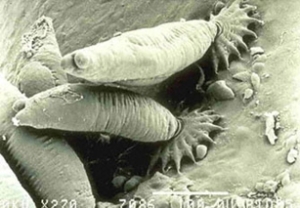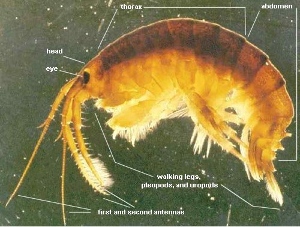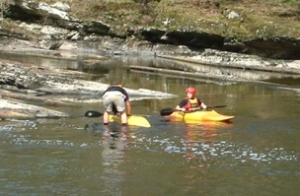BIOSECURITY NOTICE FOR CANOEISTS



NEW THREATS TO RIVERS WYE AND USK
All river users benefit from a healthy aquatic environment. In addition to the work to improve the ecology of the Wye and Usk, the Foundation must make canoeists (anglers have their instructions) aware of the dangers that they might inadvertently pose to indigenous flora and fauna, and what they should do about it. Clothing and equipment that has not been thoroughly dried or disinfected can carry parasites and other diseases and infect water bodies. These can have devastating effects as species that inhabit the newly infected water body have little or no immunity. Crayfish plague is just such a disease. It is carried by the American signal crayfish, which is widely prevalent and immune to the parasite whereas our native white clawed crayfish is not.
Another potentially damaging plague is Gyrodactylus salaris (GS) which affects salmon and this could and be brought in from the continent. It has devastated rivers in Norway.
Another, more recent threat has come from the killer shrimp Dikerogammarus villosus, a destructive species that has arrived in UK waters from Eastern Europe. If introduced into the Wye or Usk they too will have a devastating effect on native species of invertebrates, fish and other wildlife. They can easily be transported in the webbing and water in the bottom of canoes and kayaks. For more information on killer shrimp please click here.
The risk of Crayfish plague ,GS and killer shrimp require precautions to be taken.
WHAT YOU MUST DO
If your canoeing equipment or clothing has been used abroad or on a different UK river to the one you intend to paddle in the 7 days prior to you visiting the Wye or Usk, you must ensure that your clothing and equipment has been properly sterilised through one of the following methods before you arrive:
Method A: Drying to a minimum of 20 degC for at least 2 days.
Method B: Heating to above 60 degC for at least one hour.
Method C: Deep freezing for at least one day.
